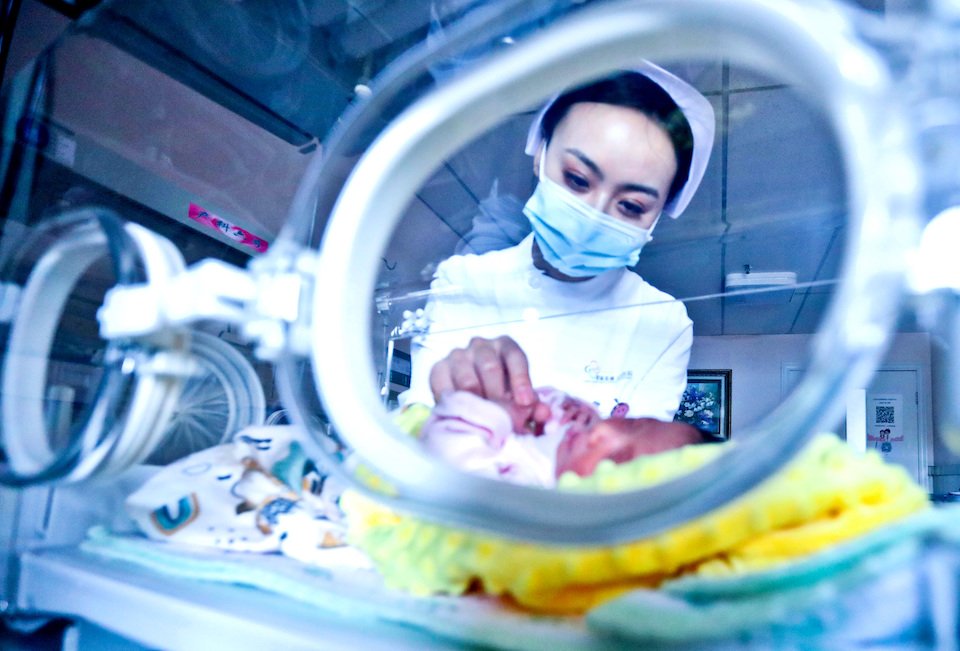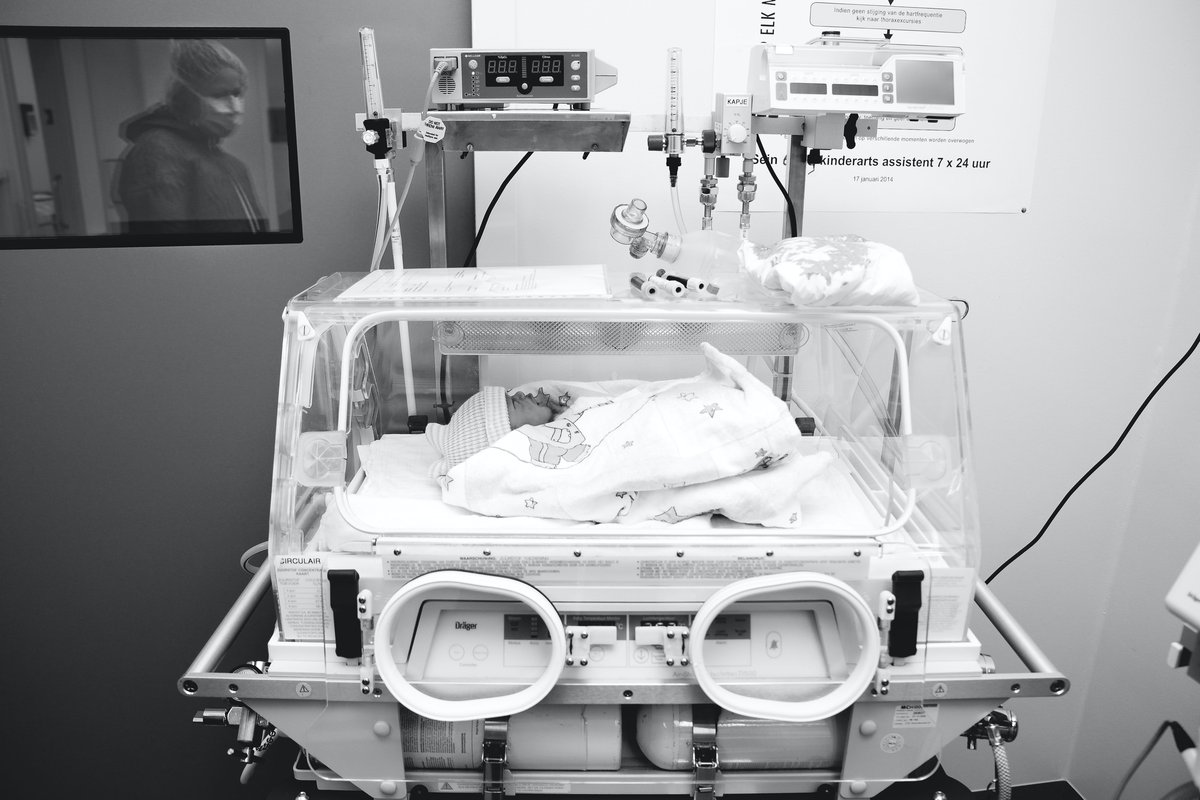An insider of the American surrogacy industry shares stories about practice banned in China
Revelations about actress Zheng Shuang’s American surrogate children and her renouncement of them has set off fierce online discussion concerning surrogacy in recent weeks in China.
In many eyes, surrogacy entails the exploitation of women and cannot be condoned under any circumstances. Others aren’t wholly opposed to surrogacy but primarily take issue with its commercialization. Still others view surrogacy as a free choice, offering a final hope to those women unable to conceive.
An employee in the American surrogacy industry, Bai Guan, shares the stories of the Chinese clients and the American surrogate mothers he has crossed paths with. Bai Guan got his start in a Californian maternity center and discovered the surrogacy industry while helping a friend search for a surrogate mother. He found that commercial surrogacy was legal in many US states, and moreover, that his own state of California was an American surrogacy hub. In addition to sperm and egg donation and in-vitro fertilisation, he mainly helps his Chinese clients connect with surrogacy mothers willing to “donate” their womb.
-1-
In America, a surrogate costs upwards of 1 million RMB.
I’ve been in the American surrogacy industry for around six years.
More than 90 percent of clients I’ve dealt with want a child but are unable to conceive. Some struggle for years without becoming pregnant before turning to surrogacy. Another portion are because of the easing of the “Two Child Policy” in the last couple of years. Their age makes it difficult for them to get pregnant again. They hear that the US offers a legal route to surrogacy and come to give it a shot.
This means the majority of women opting for surrogacy do so because they have a real desire for a child. However, some women seek out surrogacy because they don’t want to carry a child themselves.
The stuff that gets reported in those news articles, like “After giving birth, Star X’s figure is back in shape!” or “Star Y still goes out in high-heels while pregnant!”—a lot of them have used surrogates, but they keep it hidden. They even go to the length of faking a pregnant belly with special baby bump clothing tailored to any month.
My role is that of a “surrogacy coordinator,” roughly equivalent to an agent. The clients find me and I arrange the proper visas, hospital appointments, video consultations, appointments to see a doctor, as well as airport pickups and accommodation arrangements on their return trips to America. Some come for “test-tube babies” that they’ll carry to term themselves, while others come to seek a surrogate mother for their embryos.
Those seeking a surrogate first come to America to freeze their embryos, then they go back to China. It’s my job to help them find a surrogate mother. This includes video meetings between the prospective parents and surrogate mother, signing a contract, and so on. The whole process is conducted online. It’s all on me to accompany the surrogate mother through implantation and from pregnancy until birth in America, right up until my clients return to America to take their children.
The parents fly in two weeks before the due date. Then it’s a case of waiting at least a month until the baby is a little bigger and its safer to fly. When I can see them off as a family, my work comes to a temporary close. When all is said and done, the whole process of getting a surrogate child in America will set you back approximately 160,000 USD, over 1 million RMB. This is no small sum for an ordinary person.
-2-
Facing a 26 week premature baby, my client hesitates whether to go through with it.
Over the years, I’ve dealt with infertile women who are willing to make any sacrifice necessary to have a child. I’ve also dealt with famous Chinese on the rich-lists. But it was my first client that left the deepest impression on me.
At that time, after developing a viable embryo, the client could elect to implant either a single embryo or two. If two are implanted, there’s a possibility of twins. The client chose the latter option, not expecting to actually have twins. But there was an unexpected complication—during the 26th week of pregnancy (just over 6 months in), the surrogate mother went into premature labor.
When I made it to the hospital the surrogate mother had already been taken to the delivery room. In an American hospital, at the first sign of premature labor the doctor will administer a shot to promote fetal lung development (the hormone glucocorticosteriod). A full 24 hours at least is needed to coax the lungs to mature—this will significantly decrease the risk of the baby developing respiratory issues.
But in this instance, 12 hours after the injection, the surrogate mother had endured all she could take. After a while, the doctor emerged from the delivery room cradling a baby to his chest. This puzzled me; where was the other one? He said the other one could remain a few extra days inside the mother’s womb, the longer the better.
The baby was able to hold out another 48 hours inside its surrogate before it was born. For me it was the first time I heard of twins that weren’t born at the same time.
Since both the babies had been born prematurely they were taken straight to the intensive care unit. At that time the mother’s whole body seemed as if it was in a state of collapse; her face was sunken and she was utterly exhausted. She said to me, “I did everything I could. This isn’t my fault.” I replied, “You're right, it’s not your responsibility. Don't worry, and rest up well.”
When my clients heard the news, they immediately flew over to the US. In the meantime, they had already consulted their medical friends. They understood that in China, a child born before 28 weeks had little chance of survival, because the baby’s organs would not have developed properly and there would be lots of health complications. They wanted to discuss with the hospital and abandon attempts to save the babies, but American hospitals don’t take the parents’ input. So long as the technology was available, there was no question of not save the child. There was nothing the parents could do.
But in the meantime, what was to be done about the spiraling medical costs? The doctor said it wasn’t their concern—their only job was to do all they can to save the child. “You can discuss fees with the finance department,” the doctor said.
Actually, this couple already had a child. They just wanted the twins to make their lives even richer. They never considered things would turn out like this. This waiting game was torture for the parents, I could understand their position.
Because the eldest twin hadn't had long to absorb the medication, heart surgery quickly followed, then stomach surgery. Sadly, the child passed away. Since the younger twin had longer to absorb the medication, all its vital signs remained stable. At 34 weeks it was discharged from the hospital.
At this point the client was faced with a problem. They were torn about what to do about the baby. Although the physical tests turned up nothing, how would the brain of a 34-week baby develop as it grew up? No one could say.
Back then the clients talked it over with me and implored me to look after the child for a period of time. In the event the child really did have any sort of problem, they wouldn’t take him back to China but would come up with some way of escaping the adoption procedure and letting an American family welcome the child into their home.
This kind of thing called for discretion. They couldn't just turn anywhere for help, so after signing over powers of attorney to me, I took the child into my home to raise for six months. All this time I sent the parents videos and pictures so they could get a better grasp on how he was doing. As far as I could tell he was no different from any other child and seemed to be developing completely in line with a full-term baby.
After that the clients underwent an intense internal struggle, deciding to take the child back home with them. The day they came to pick up the child left a very deep impression on me. Though the child had lived in my home so long, he had not once smiled at me. So when the time came I joked, “Your mother has come to pick you up. When you see her, make sure to smile. Best to latch onto her thighs and go with her that way.”
The client arrived at 11 in the evening and I travelled to her hotel to hand the child over. By then it was well into the night and the baby was fast asleep. He’d cry for sure if I attempted to wake him. The funny thing is, when the parents walked over the baby had already woken up. He sat there on the bed without a peep. As the parent approached he suddenly broke into a smile. The parents became more and more smitten and headed back to China together with him.
More than a few surrogate mothers complain to me about how long these parents have yearned for a child, so why is their manner so severe when they actually take the child into their arms? Why are they so silent? There’s no sense of joy. This probably has to do with the Chinese disposition—it’s quite reserved.
But it bears saying that surrogacy is indeed different from carrying a child yourself. My clients did not experience those months of pregnancy or labor, so they don’t have a deep comprehension of childbirth. In that instant when they hold their child, they get a faint sense of the reality, that their wish has come true: “This is my child…I have a child of my own.”
After handling so many cases, I usually lose touch with the parents after that point. Most parents are keen to put the whole matter behind them and not to let others know.
-3-
Surrogate Agent
Oversight of the surrogacy industry in America is a shambles. You might need to be a licensed practitioner to sell a house or insurance, but when in the surrogacy industry, which involves human life, there are no strict regulations. It’s as simple as setting up a company. Then you can operate freely as a surrogacy agent.
As business expanded, I also invested in a surrogacy company. American surrogacy companies are typically small-scale. Smaller ones have perhaps two or three surrogate mothers, while regular-sized outfits might attract seven or eight per year.
We usually put up advertisements for surrogate mothers on Facebook and Google. Then we do video interviews with the applicants. We collect the height, weight, and basic medical information. We provide all this information to prospective clients to inform their decision—it’s like selecting a romantic partner. Once a match is made, we prepare a video chat for open discussion between the intended parents and surrogate mother. They'll talk about hobbies, everyday life, their family situation, and the surrogate mother's circumstances. A good feeling is the most important factor in the selection.
On the whole, I've found prospective parents don't have any special requirements for the surrogate mothers; it’s enough for them just to carry the child. It’s more difficult when clients are particular about their surrogate mother: They might want a certain age, someone who is already married, who has a stable job or a husband with a steady job, a stable household, or who hasn't given birth to too many children. A natural birth might be non-negotiable for them; they might feel it’s best the surrogate lives in California, and so on...
-4-
A surrogate mother inspires new-found respect .
People that become surrogate mothers generally come from lower-income households, so they look at surrogacy from a financial perspective. But if you crunch the numbers, they don’t stand to earn all that much. One pregnancy comes to between 40,000 and 50,000 USD, about 4,000 or 5,000 a month on average.
At the start, I was no different from many clients, harboring fixed misconceptions about surrogates. But there was one surrogate mother that thoroughly altered my way of thinking.
In the beginning, nothing about this woman struck me as particularly special. You could even say I looked down upon her a little. She was plump, unattractive, a high school graduate—I was far from pleased with her. What’s more, she had first given birth at age 13. By 27 she already had five kids of her own. American surrogates are predominately single and unmarried—so she was supporting these five kids herself.
It was her 13-year-old eldest daughter who accompanied her to the embyro implantation. Back then I found it mystifying, I asked her how she managed to support five children by herself. She told me that there were free school buses where several of the children attended school. Her mother helped out taking the children to and from school and looking after them, while she went off to earn money working as a gas station cashier.
Her organizational and time-management skills really surprised me, so I recommended her to a client. The client was initially hesitant, thinking she was too fat and ugly. But after three unbearable years of trying for a child without any luck, they ran it by the doctors and nurses, who told them the surrogate was an excellent choice. The clients decided to give it a go.
It turns out they made the right choice. This surrogate mother displayed exceptional self-management skills. On top of bringing up five children, she took all of her various medicines on schedule. Surrogacy in the US isn't like the underground operations you may find in China—the surrogate mothers have to return to their own homes to live. You have no control over what they eat or drink, so they have relative freedom. For her to be able to coordinate everything was no easy feat.
At last, it came to the 39-week mark and she gave birth at full-term to baby of over 4 kilograms. Smooth as can be!
This woman defied my expectations. I had taken her for one of those rough-and-tumble people at first. I hadn’t expected her heart to be so refined. Normally, after a baby is handed over, the surrogate mother will start chilling breast milk for our company to pick up, or the clients might go fetch it themselves.
The surrogate in question really wanted to see the baby, so she settled on delivering the milk herself. The round-trip took nearly five hours. She wasn’t after money: it was all to see the baby and to give the parents extra time with their child.
Yet after she returned from the clients’ home she was furious, what she had to say took me aback.
She told me, “After taking the milk the couple didn't utter even a single word of thanks. And the two of them sleep in one room, with the baby sleeping separately with the nanny [yuesao, a caretaker hired by Chinese families to take care of the mother and baby for the first month after birth]. All these years yearning for a child just to let someone else raise it. How can you even it call it their child?”
In fact, I didn’t feel this couple's approach was ideal, either, but all I could do was smooth things over. “This is their first time. They’ve got no experience. Try to understand them.”
-5-
A hopeless state of affairs
Many Chinese people have come to the US for surrogacy services in the last two years. They’ve practically become a group all of their own, so I want to do all I can to protect the image of Chinese people.
I’ve heard of Chinese clients refusing to raise their surrogate child because of a bad heart or some deformity—people straight up disappear on you. I don’t want it to end up where a surrogate parent refuses to accept a client just because they’re Chinese.
I’ve also taken on some peculiar cases, where my clients were shrouded in mystery. For one couple, it was as though they were wanted criminals back in China or something. From time to time, I’d be informed that both husband and wife had to go into hiding for a couple of days.
He’d flown the sperm directly from Hong Kong to the US. Since his wife was older and her eggs weren’t viable, they’d sought out an American egg donor. Without them ever being present, here was a successful embryo.
Afterward, when it came time for the surrogate mother to give birth, the couple were denied entry to the US due to suspected visa fraud. Since the baby had been born, they had no choice but to employ someone to care for the baby for two to three months at the maternity center, then hire someone else to fly with the baby back to China.
Throughout this whole process, the couple never appeared in person, yet managed to end up with an American baby. What’s more, this client didn't just seek my help in finding a surrogate mother, but previously engaged another company, and succeeded there. To this day he is still relentlessly searching for two further surrogate mothers. He wants to have four children!
You might well wonder how these children will be raised once they get back to China. I don’t know. Thinking it about it gives me a headache. But it’s not for us to comment on this sort of thing...
Translated by Jesse Young
___
This story is published as part of TWOC’s collaboration with Story FM, a renowned storytelling podcast in China. It has been translated from Chinese by TWOC and edited for clarity. The original can be listened to on Story FM’s channel on Himalaya and Apple Podcasts (in Chinese only).















